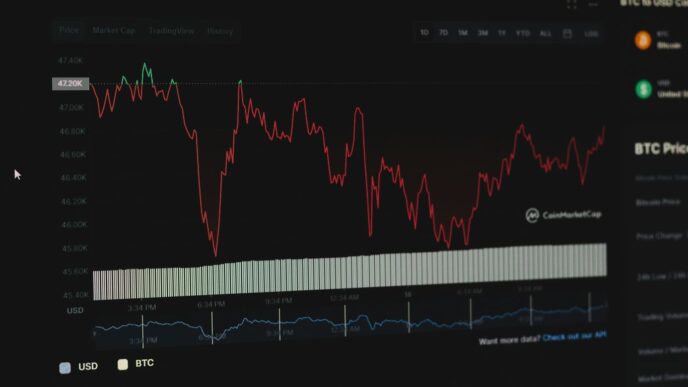Medical device news in 2025 is packed with change, and honestly, it’s hard to keep up. There’s something new every week, whether it’s a big merger, a new wearable, or headlines about AI making healthcare smarter. Big companies are buying up smaller ones, people are using health gadgets at home, and the tech just keeps getting more personal. If you’re in the industry—or just interested in how healthcare is changing—2025 is shaping up to be a year to watch.
Key Takeaways
- AI and machine learning are leading to smarter devices, but also bringing more rules and oversight from regulators.
- Wearable tech and remote monitoring tools are moving healthcare out of the clinic and into people’s daily lives.
- Big mergers, new IPOs, and lots of investment are shaking up the medical device market, with major companies grabbing new opportunities.
- Robotics and 3D printing are making surgeries more precise and helping create custom devices faster than ever before.
- Sustainability, health equity, and direct-to-patient strategies are no longer just buzzwords—they’re shaping how companies design, build, and deliver medical devices.
AI and Machine Learning Innovations Reshape Medical Device News
Artificial intelligence and machine learning are doing things in medical devices that we just didn’t expect a few years ago. Companies are rolling out new tools fast, and every month, the bar moves a little higher for what these systems can do. Whether you’re a fan or a skeptic, you can’t ignore it: AI is the big story in MedTech for 2025.
Regulatory Oversight for AI-Enabled Devices
Bringing more AI into healthcare sounds exciting, but it’s making regulators nervous—and for good reason. The software is tricky:
- Algorithms change as they learn, raising questions about how to keep them safe over time.
- Approval processes now include post-market monitoring to spot problems after products launch.
- There’s pressure for companies to use bigger, more diverse datasets to avoid bias and ensure fairness.
| Challenge | New Regulatory Response |
|---|---|
| Algorithm drift | Post-market surveillance |
| Data bias | Mandatory diverse datasets |
| Lack of transparency | More pre-market documentation |
With every update, regulators walk the line between protecting patients and allowing innovation, and that balancing act isn’t getting any easier.
Efficiency in Clinical Decision-Making
Doctors already rely on machines for reading images, checking for early warning signs, and managing complex data. Now the new generation of AI-enabled devices tackles some major clinical pain points:
- Speeding up diagnoses by reviewing huge sets of records and images in seconds
- Giving real-time decision support—immediate feedback that helps spot risks or suggest treatments
- Helping manage patient flow and resource allocation, especially in crowded hospitals
A lot of doctors grumble about alerts and popups, but when the system gets it right, it prevents missed diagnoses and helps prioritize urgent cases.
Trends in AI-Driven Product Development
MedTech firms building devices around AI are seeing a shift in how products move from research to reality:
- Collaboration between engineers, clinicians, and data scientists is now standard.
- The use of synthetic and real-world data is growing, cutting down development time.
- AI tools help designers spot design flaws or safety risks earlier in the process.
| Metric | 2024 | 2025 (est.) |
|---|---|---|
| Percent of projects using AI | 42% | 55% |
| Average reduction in dev costs | 6-12% | 12-18% |
| Market approvals for AI devices | 870 | 1,100+ |
Even some of the more skeptical old-timers admit that AI is saving them months of headaches and making product launches less risky.
Wearables and Remote Monitoring Drive Personalized Healthcare
Healthcare keeps shifting thanks to the rapid growth of wearables and remote monitoring. In 2025, everyday gadgets like smartwatches, patches, rings, and biosensors have started to shape how people manage their health without stepping into a clinic as often. Wearables aren’t just tech gadgets anymore—they’re tools for tailored, real-time health management.
Continuous Glucose Monitors and Cardiac Tools
- Continuous glucose monitors (CGMs) are everywhere. They send constant blood sugar readings directly to phones, helping people with diabetes make daily choices about food, medication, and activity.
- Wearable cardiac tools now check heart rhythm, oxygen, and blood pressure on the fly, making them useful for patients with arrhythmia or heart failure.
- Smart alerts flag problems quickly, prompting doctor visits before conditions get worse. This shift helps prevent emergencies and hospitalizations.
Sample Comparison Table: Popular Health Wearables in 2025
| Device Type | Key Function | Average Cost (USD) | Common Users |
|---|---|---|---|
| CGM Patch | Glucose Monitoring | $100/month | Diabetes Patients |
| Smartwatch | Heart & Fitness | $200-400 | General Population |
| Cardiac Monitor | Rhythm Tracking | $250 | Cardiac Patients |
Empowering Patients Through Real-Time Data
- Users can check their health stats any time, anywhere. This data isn’t just numbers on a screen; it helps people make small choices that add up over time.
- Frequent reminders and color-coded alerts mean less worrying about missing a symptom—patients know sooner if something’s wrong.
- Real-time sharing with healthcare teams allows for quicker advice, adjusted medicines, or check-ins, all from home.
It’s surprising how often people find motivation when their wearable buzzes or flashes a warning. Direct feedback helps many users stick to good habits or catch early signs of trouble before they become emergencies.
Expansion of Direct-to-Consumer Devices
- Companies now market devices straight to consumers, not just to doctors or clinics.
- Ads highlight easy set-up, comfort, and style as much as health features. Some devices are even disguised as jewelry or casual accessories.
- As direct-to-consumer options multiply, there’s competition on price, flexibility, and privacy, letting people pick the best fit for their needs.
These shifts mean the gap between medical technology and everyday life gets smaller every year. Wearables help people be proactive, not just reactive, about health. This new normal is turning tech into something that quietly supports daily routines, rather than adding complexity or stress.
Mergers, Acquisitions, and Funding Spur Market Transformation

Market activity in 2025 is shaking up the medical device industry in all sorts of ways. Major companies are spending billions to pick up newer, faster-growing rivals, while smaller players try to keep pace. Companies are selling off slower business lines to focus on areas where they see more growth. Investors are also throwing a fresh wave of cash at startups, betting on the next breakthrough.
Major Players Strengthen Positions with Strategic Deals
Big medtech companies are making power moves by snapping up high-growth businesses and dropping outdated ones. Here are some notable deals from early 2025:
| Company | Deal Type | Value (USD) | Target/Asset |
|---|---|---|---|
| Stryker | Acquisition | $4.9 Billion | Inari Medical |
| Stryker | Divestment (Sale) | Confidential | Spinal Implants Business |
| Boston Scientific | Acquisition | $664 Million | Bolt Medical (final stake) |
| Lantheus Medical | 2 Acquisitions (combined) | $1.75 Billion | Precision diagnostics startups |
- These deals highlight a focus on fast-growing sectors like vascular care and diagnostics.
- Stryker’s CEO said focusing funds on more promising markets just made sense for them.
- Other giants, like Johnson & Johnson and GE Healthcare, have reportedly increased cash reserves for more deals.
The medtech market in 2025 is being shaped by bold moves—companies are betting on what’s rising fast and letting go of what’s lagging behind.
IPO Activity and Investment Trends in 2025
The public markets are looking lively again for medical device companies… sort of. There are more IPOs this year than last, but the bar is still high.
- Two IPOs closed or launched in just the first month of 2025.
- Over $2.5 billion raised by medtech firms so far, with at least six rounds bringing in $100 million or more each.
- Private investment is back on the upswing after a few dry years.
- Lower interest rates are making it easier to fund deals and borrow money for growth moves.
Table: Medical Device Capital Activity – January 2025
| Category | Number | Total Capital ($) |
|---|---|---|
| Announced IPOs | 2 | $850 Million |
| Private Financings >$100M | 6 | $900 Million |
| Total Capital Raised | — | $2.5 Billion+ |
Impact on Startup Ecosystems and Competition
Startups aren’t getting left behind—they’re seeing new money and new challenges at the same time:
- Venture funds and private equity are targeting companies that deliver data-driven, consumer-focused devices.
- Acquisition is both a goal and a threat: big firms may snap up some, but others will be squeezed out or forced to pivot.
- Smaller medtech companies now need stronger proof of product-market fit, not just a neat idea.
For startups, the landscape is fast-moving:
- Fundraising is more competitive, but big checks are possible for the right business.
- Partnerships with industry leaders are more common, giving young companies access to resources.
- Those who focus on untapped needs—like home health monitoring or less-invasive procedures—have real momentum.
The race is on: if you’re nimble and can show real impact, 2025 is a year to attract funding or find a fast exit. But the competition is fierce, and the big fish seem hungrier than ever.
Robotics and 3D Printing Expand Access and Precision in Care
The MedTech space is rapidly shifting, and the stories aren’t always about the glitz of new devices—sometimes it’s in how we’re using familiar tech like robotics and 3D printing to solve stubborn problems. 2025 has seen hospitals and clinics break habits, with more doctors putting their trust in smart machines and patient-specific parts than ever before. It’s not just about keeping up with trends; it’s about fixing gaps in care and doing more with fewer resources.
Rise of Smart Surgical Platforms
- Robotic systems are growing beyond novelty status—procedures now rely on them for millimeter-level precision and steadiness human hands can’t match.
- Robotic assistants take over repetitive or risky steps, so surgeons focus on the details that matter.
- More affordable tools have made robot-assisted procedures an option for hospitals outside major cities.
Here’s a quick overview of growth from 2023 to 2025:
| Year | Robot-Assisted Surgeries (US) | % of Total Surgeries |
|---|---|---|
| 2023 | 1,200,000 | 10% |
| 2024 | 1,650,000 | 14% |
| 2025 | 2,050,000 | 17% |
With robots sharing the OR, operations for cancer and heart disease that once took hours—or just weren’t possible—are now routine in more places, for more people.
Custom Device Manufacturing and On-Demand Prototyping
- 3D printing lets clinics create custom-fit implants and prosthetics in days, not weeks.
- Clinics can now print surgical guides or splints tailored for each patient, improving comfort and healing.
- Manufacturers are saving money by testing prototypes fast—straight from surgeon feedback to the printer in one shift.
Key advantages of on-demand medical device production:
- Reduces warehouse and transport needs
- Allows device tweaks for each surgery’s needs
- Decreases overall manufacturing waste
Remote Surgery and AR Integration
- Some doctors can now use robotic platforms to control instruments from hundreds of miles away, shrinking regional healthcare gaps.
- Augmented reality (AR) overlays real-time images and guides during surgery, helping with tough visual fields.
- Rural hospitals have started testing AR for consultations, so specialists virtually join in critical cases.
Remote surgical options have expanded in:
- Orthopedic repairs
- Urology
- General laparoscopic procedures
The real excitement isn’t just tech for tech’s sake, but its ability to stretch skilled hands farther and make tricky procedures safer, even when the right specialist isn’t in the room.
Sustainability and ESG Priorities Influence Medical Device News

Medical device companies can’t ignore sustainability and ESG anymore—these priorities are stretching from boardrooms to factory floors. In 2025, there’s way more pressure from every corner: regulators, patients, and even hospital clients are demanding greener, more ethical products. It’s not just about doing the right thing; for most companies, sustainability is fast becoming a make-or-break issue for staying in the market.
Eco-Friendly Sourcing and Manufacturing
There’s been a huge shift towards finding better materials and reducing waste through every stage of a device’s life. Green energy is showing up in more factories, and there’s real interest in:
- Using recycled or biodegradable plastics where possible
- Cutting back on packaging, or making it from recycled content
- Designing products so they can be safely and easily reprocessed, instead of tossed out after each use
Here’s a quick look at the new normal for eco-friendly manufacturing:
| Area | Common Changes (2025) |
|---|---|
| Raw materials | Biodegradable / recycled |
| Factories | Switch to renewables |
| Device design | Focus on reusability |
| Packaging | Less material, more recycling |
Companies that go beyond the bare minimum with green sourcing are set to avoid product recalls and win the trust of both doctors and everyday buyers.
Supply Chain Management and Digital Transformation
The supply chain used to be a black box—now, transparency is expected. Digitization is making it easier (and, frankly, necessary) to track every shipment, batch, and piece. Most medical device makers are:
- Investing in traceability tools to keep tabs on devices and materials
- Prioritizing cybersecurity for sensitive health and shipment data
- Partnering with suppliers who follow similar ESG rules
Efforts here are helping companies slash waste, deal with delays faster, and even spot carbon bottlenecks before they grow into expensive problems.
Meeting Health Equity and Accessibility Goals
It’s not just about the environment; social and governance pressures are rising, too. Medical device makers have to prove they’re serious about health equity and better access for patients who usually get overlooked. Some main areas of focus:
- Creating devices that work just as well for people with disabilities or in low-income areas
- Offering clear info about pricing and access
- Supporting health programs in communities that need help the most
All of this means companies are measured by more than their bottom line—patients, investors, and regulators want to see real evidence of action, not just well-designed brochures.
Sustainability and ESG are now baked into how medical device companies plan, make, ship, and sell their products. Those who put it off are quickly finding themselves left behind, while the leaders chart out whole new standards for what “good enough” looks like in healthcare.
Direct-to-Patient Strategies Change the MedTech Landscape
Direct-to-patient (DTP) strategies are really taking over the MedTech industry in 2025. These approaches let companies reach out to people directly—no more relying only on hospitals or a doctor’s referral. This method isn’t just about convenience; it’s about designing devices and services that actually fit into consumers’ lives. The healthcare world is shifting fast, and DTP is shaping who gets care, how they get it, and what products they use.
Shift Toward Nontraditional Care Settings
Medical care is moving outside the walls of traditional hospitals. Alternative surgery centers, outpatient clinics, and even at-home care are becoming the norm for all sorts of treatments and procedures. Here’s what’s changing:
- Procedures that used to require lengthy hospital stays now often happen at local clinics or even at home.
- Telehealth platforms connect patients with clinicians, making continuous care possible.
- Devices are designed for easy self-administration, which boosts access for people who might not visit the doctor regularly.
It’s not just about location—it’s about putting choice in the patient’s hands. Companies are making products that work wherever the patient is.
Consumer-First Device Design and Marketing
MedTech firms are realizing people don’t want cold, confusing medical gadgets. They want simple, attractive products they can control themselves (and maybe even brag about to their friends). What’s going on here:
- User-friendly interfaces: Devices now feature intuitive apps and easy-to-read displays.
- Design matters: Sleek, wearable form factors replace clunky, medical-looking machines.
- Personalized marketing: Messaging focuses on solving specific user problems, not just listing features.
| 2025 Consumer Expectations for MedTech Devices |
|—|—|
| Easy setup | 85% of consumers say it’s vital |
| Remote data access | 70% want app connectivity |
| Customizable alerts | 65% prefer options tailored to them |
Dropping the medical jargon and focusing on user comfort is changing who actually uses—and sticks with—these devices.
Bridging Gaps in Health Personalization
Not everyone’s needs are the same, and direct-to-patient strategies are finally addressing those differences. Companies are using data and feedback to make care more personal, including:
- Devices that adjust to individual health profiles, not just basic averages.
- Subscription services for regular device updates and support.
- Home delivery and setup help, so people in rural or underserved areas aren’t left out.
Think of it like this: MedTech in 2025 is ditching the assembly line approach, picking up on real-life issues, and meeting patients where they actually are in life—not just in a waiting room or surgery center.
Personalized and Precision Medicine Accelerate Healthcare Advancements
Precision medicine feels like it’s everywhere now. Hospitals, clinics, even some primary care practices are adopting new ways to treat patients based on their own biology. This shift means that therapies and procedures are no longer one-size-fits-all. It’s getting more personal, with tools that guide treatments based on genetics, lifestyle, and real-time data.
Genomics and Biomarker-Driven Therapies
Testing a patient’s DNA or identifying biomarkers in their blood has gotten faster and cheaper. Now, whole genome sequencing isn’t just for rare diseases — it’s a routine part of cancer care, and it’s spreading into cardiology and neurology. Here’s where it’s making the biggest difference:
- Targeted cancer treatments that match a person’s genetic mutations
- New immunotherapies for autoimmune disorders
- Earlier diagnosis of inherited conditions in children and adults
| Therapy Type | % Patients Eligible (2025) | % Reporting Positive Outcomes |
|---|---|---|
| Targeted cancer drugs | 65% | 82% |
| Cardio-genetic therapies | 40% | 77% |
| Gene editing (rare diseases) | 12% | 55% |
Integration with Big Data Analytics
Hospitals and device makers are now using massive datasets pulled from wearables, scans, and patient histories. Here’s how it’s changing healthcare routines:
- Algorithms help spot early warning signs before symptoms show up
- Doctors can monitor medication side effects on a patient-by-patient level
- Clinical decision tools suggest treatments based on thousands of similar cases
It used to be that one or two doctors would make a plan; now, smart systems cross-check millions of data points. It’s making care quicker and sometimes even more accurate.
Improved Outcomes for Rare and Chronic Diseases
For folks with rare conditions or tough-to-treat chronic illnesses, this approach is a game-changer. Diagnostic delays have been reduced, and new treatments that used to take years to develop are reaching patients much faster.
- More tailored clinical trials focused on small patient groups
- Devices that self-adjust therapies based on patient response
- Predictive tools that flag high-risk periods and prevent hospitalizations
With all these rapid changes, patients are finally seeing treatments that actually fit their lives—not just their diseases. It’s not perfect yet, but it’s getting closer every year.
Conclusion
So, looking at everything happening in the medical device world right now, it’s clear 2025 is shaping up to be a busy year. Big companies are making moves, new tech is popping up everywhere, and there’s a lot of money flowing into the industry. We’re seeing more deals, more IPOs, and a real push toward things like AI, robotics, and wearable health devices. It’s not just about the gadgets, either—there’s a bigger focus on making healthcare more personal and easier to access, whether that’s through remote monitoring or smarter, data-driven tools. Companies are also thinking about things like sustainability and how to keep up with all the new rules. All in all, it feels like the medtech industry is in the middle of a big shift, and it’ll be interesting to see how these trends play out over the rest of the year. If you’re following this space, now’s a good time to pay attention—there’s a lot more change coming.














